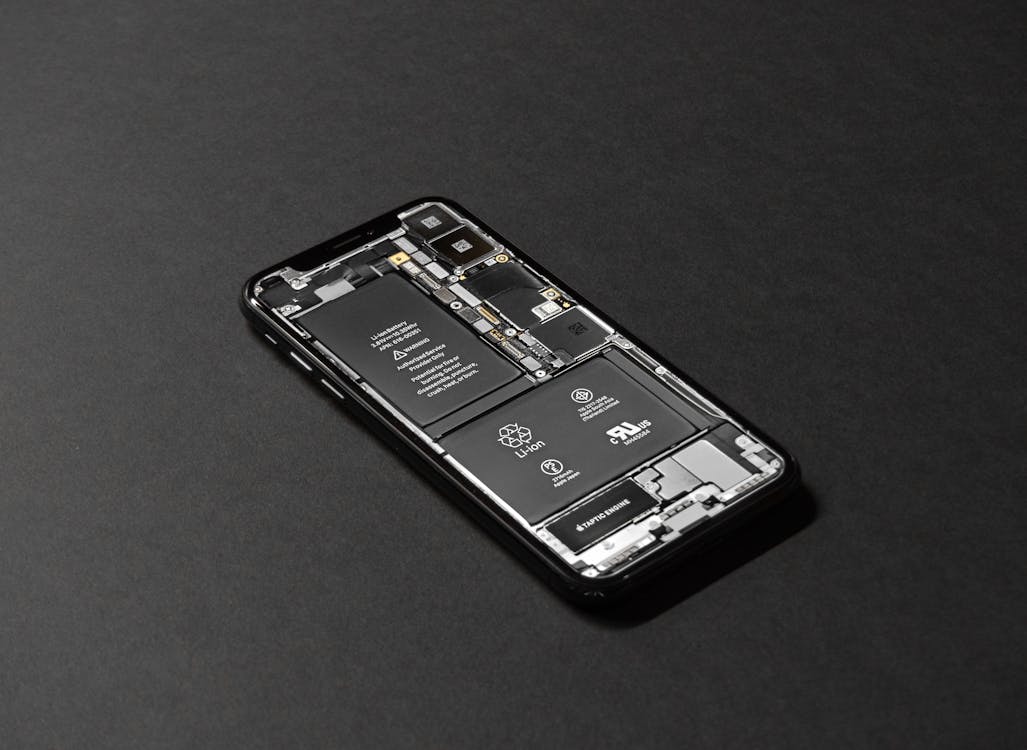Battery Technologies : The Next Level Technology (Part-II)
SAMSUNG
Samsung have patented a technology they call ‘Graphene balls’. These are silicon oxide nanoparticles which are coated with graphene sheets that resemble popcorn. These are used as the cathode as well as being applied in a protective layer on the anode. The researchers found increases in the volumetric density of a full cell of 27.6% compared to an uncoated equivalent and the experimental cell retains almost 80% capacity after 500 cycles. Additionally, charging is accelerated and temperature control is improved. NanoGraf, meanwhile, are using graphene sheets to produce carbon-silicon batteries to increase stored energy by 30%.

AMRIUS
Amprius go one stage further with their anodes of ‘100% silicon nanowire’. The maker claims that they can achieve 500 Wh/kg which is in the range suitable for enabling electric aircraft – Airbus Space and Defence, announced a partnership with the company last October. The silicon nanowires are attached to a thin foil by vapor deposition in a continuous, roll-to-roll production process – helping keep manufacturing costs down. The clever part is that these finger-like projections are porous on a micro and macro scale, allowing them to swell freely without significant expansion of the whole electrode. Just as trees swell with leaves in spring but the forest remains the same size.
Some internet sleuths concluded that the company was recently acquired by Tesla because Amprius recently moved their headquarters right next to a Tesla facility, but Elon Musk debunked these claims on twitter. Saying, “But actually nothing. Was surprised to hear they’re across the road. Adding silicon to carbon anode makes sense. We already do. Question is just what ratio of silicon to carbon & what shape? Silicon expands like crazy during discharge & comes apart, so cycle life is usually bad.” Nanomaterial research is promising.
The University of California Irvine have even produced electrodes good for 200,000 cycles using gold nanowires and manganese dioxide with a polymer gel electrolyte and many other research efforts are ongoing with other diverse materials. One thing that seems to be sure though is that as soon as it’s possible to mass produce suitable nanotechnology, we will be seeing it in our batteries in some form and quite possibly in conjunction with silicon.
Lithium Suplhur Batteries
Lithium – sulphur batteries are one emerging technology that can offer greatly improved energy densities compared to lithium-ion. The theoretical maximum specific energy of this chemistry is 2,567 Wh/kg compared to lithium ion’s 350 Wh/kg maximum. This is a huge improvement: a lithium sulphur battery could be up to seven and a half times lighter than its current equivalent. Right now, lithium sulphur batteries are nowhere near their theoretical limit, but the ALISE, a pan-European collaboration are working towards attaining a stable automotive battery of 500 Wh/kg based on this technology. In terms of economics, sulphur is much cheaper than the cobalt and manganese it would replace, and can be extracted as a by-product of fossil fuel refinement or mined from abundant natural deposits. Existing lithium ion batteries are made up of an anode and cathode between which a liquid electrolyte allows dissolved lithium ions to travel. Lithium sulphur batteries are constructed similarly, except that the active element in the cathode is sulphur, while the anode remains lithium based.
 |
| Mobile Battery |
What is Real Problem?
Researchers are facing a few challenges in bringing this technology to market. Firstly, sulphur is a poor conductor of electricity. Typically the sulphur atoms are embedded within the matrix of carbon atoms in graphite, an excellent electrical conductor. This arrangement is vulnerable to a process known as shuttling, which causes batteries to drain when not in use, while also corroding metallic lithium anodes, reducing capacity as the battery is cycled. Next and most significantly, the electrodes physically swell up as lithium ions bond to them. This is more dramatic with lithium sulphur than existing chemistries, the sulphur cathode expanding and contracting by as much as 78% as the battery cycles, or eight times more than cathodes typically used in lithium ion batteries. As might be expected from this kind of repeated strain, polymer or carbon based supports and binders fragment and can disintegrate as the battery cycles, reducing capacity and performance. One approach to solving this is to bind the cathodes with different polymers and to reduce their thickness so that the absolute change in dimension is not so extreme.
Many lithium-based batteries also must deal with dendritic growth, thin fingers of metal which grow away from the surface and can eventually reach across to the cathode, creating a short circuit and rapid discharge. This is the same thermal runaway malfunction which has caused lithium ion battery fires in the past, so research for coping with this effect can be carried over to lithium sulphur technology, including exciting uses of graphene and other nanostructures to act as scaffolds for the deposition of lithium.
Solid state electrolytes could also offer solutions to these issues. Lithium sulphur batteries are not just ivory tower ideas. Airbus Defense and Space flew a 350 Wh/kg battery made by Sion Energy back in 2014 powering their Zephyr High Altitude Pseudo Satellite. Researchers at Monash university in Australia announced in 2020 that they anticipate having a product ready for commercialization in 2-4 years which could provide electric cars with a 621 mile range. A common theme in emerging technologies so far has been researchers’ desire to develop solid state electrolytes. These would replace flammable organic liquids with stable, crystalline or glassy-state solids, or polymer-base. It is hoped that using these solid electrolytes would enable the use of metallic lithium electrodes to provide higher output voltages and allow for increased energy density.
 |
| Airbus |
Additionally battery safety improves in vehicle crashes, and becomes more resistant to overheating and short circuiting, in part due to physical blocking of the dendritic growth of lithium and other electrode materials which currently plague lithium batteries. Apart from its theoretical promise, we can be confident that we will see solid state batteries powering us along the road in the near future because carmakers as diverse as Volkswagen, Toyota, BMW, and Hyundai have all been investing in the technology. Volkswagen, for example, put $300 million into QuantumScape, a Stanford University spin-off. QuantumScape has been holding its cards close to its vest as the website offers no information on their product, only a long list of new job openings – implying company expansion and confidence in their product.
It is notable that they hold patents on sulphide-based lithium ion technology and seem to be interested in thin, sintered ceramic films and lithium impregnated garnet. One of the difficulties in solid state electrolyte design is dealing with the expansion of electrodes which is more difficult to manage in solid materials. A solid electrolyte must be sufficiently flexible to permit this, yet also tough enough to resist dendrite penetration. QuantumScape hold a patent for ‘Composite Electrolytes’ to allow them to customize and adjust the physical properties of their electrolytes for such conflicting requirements.
Panasonic have also been looking into solid state electrolytes. It is notable that Tesla have been partnered with Panasonic in their existing lithium-ion manufacturing capacity, but it is Toyota who have publicly announced their collaboration with Panasonic to develop next generation solid state batteries. Samsung too are working on solid state batteries, and in May 2020 described their technology based on a silver and carbon anode, claiming this could give a generic electric car a 500 mile range and survive over 1000 charging cycles. This is probably good news for your phone and laptop too given their current commercial interests.
Graphene In The Game
It may be just a matter of time before solid state electrolytes are in your pocket and in your car. Two carbon electrodes and a non-toxic electrolyte: what’s not to like? Add the ability to extract more power than from conventional lithium ion, and their ability to charge 20 times faster, and these lithium-ion variants could be the future for electric vehicles. PJPEye, an offshoot of Japan Power Plus have developed this technology with the National Kyushu University in Fukuoka and are currently supplying their ‘Cambrian’ batteries to anelectric bicycle company, Maruishi Cycle. Currently these are single carbon electrode batteries, and details of their exact makeup are hard to find, but they are simultaneously working on a fully dual carbon battery with two carbon electrodes, eventually to be manufactured from natural, agriculturally grown products. They anticipate achieving a performance similar to Graphene based batteries. Although their Cambrian batteries have a lower specific energy and lower energy density than lithium ion – meaning that their batteries are both heavier and bulkier than their equivalents – they boast higher specific power. For the same mass of battery as a lithium ion based alternative, it’s possible to extract the energy much faster, translating into faster vehicle accelerations. In addition to this, unlike lithium-ion, these carbon-based batteries can be discharged fully. The maker claims that this changes the equation for actual usable energy density, boasting a 40% improvement in range over lithium ion batteries of the same capacity. Moreover, they say that the battery runs cool and does not require the heavy cooling systems of current electric vehicles. Their claim that a proof-of-concept battery degraded only 10% after 8000 cycles is very promising. They plan to gradually upscale from low volume applications, such as medical devices and satellites, towards mass market aerospace and automotive customers with a battery made from carbonized cotton fibers rather than exotic, toxic metals. With fast charging and exceptionally low battery degradation over thousands of charging cycles, maybe these will provide long term, sustainable solutions for commercial vehicles in the coming decades.
 |
| Graphene |
So much diverse research is underway in battery technology that it is almost impossible just to pick five selections. Lithium batteries are found in almost any modern battery powered product: cars, computers, cameras and phones. Quad copters and drones have come about because of advances in battery technology as well as and uses for these machines are mostly held back by current battery life limitations. Better batteries are also important for the advancement of stationary storage from renewable energy sources such as solar power. Tesla is also making headway into this sector, with products like the power wall home battery, and power pack commercial energy storage products. Consumers, technology companies and industry are all clamoring for safer, lighter, more energy dense solutions – and concern is also mounting worldwide at the environmental impact of this growing demand for batteries.
With all of these exciting new battery technologies on the horizon, it’s clear the future will be electric. A great first step to prepare for the coming electric revolution is to learn the fundamentals of electricity and magnetism.
Read Part I - Here
Hope You Like the Article.
Follow us @ Facebook : Advanced Tech World



